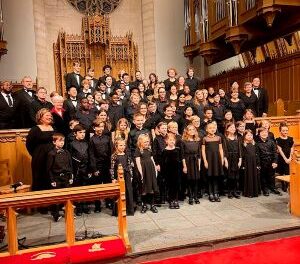The Carolina Theatre, in the increasingly trendy and gentrified downtown Durham, was transformed into an intimate meeting of musicians and dancers in southern Spain. Paco Peña, named five years in a row as best flamenco guitarist by Guitar Magazine, was leading a new show of flamenco music and dance that he called Flamencura. This magnificent troupe consisted of Peña plus two other virtuoso guitarists, a percussionist, a male and female singer each employing the cante flamenco style of singing, and two dancers. Unfortunately, no programs were provided and even calls to the theater failed to ascertain the names of any of the artists except for the headliner, Paco Peña.
The last time the Triangle area got to hear Peña was about a year ago in a very underwhelming and tepid program that he shared with classical guitarist Eliot Fisk. Tonight’s program was the real deal and a rare opportunity to experience flamenco in its purest and most raw form. This was music and dance at its most naked and unaccompanied state, except for some second-half excursions into a more nuevo style.
The evening opened with Peña playing a solo. It was nearly a completely darkened stage with just the celebrated guitarist, a little too much stage left, prepping the audience with the basic rhythms and harmonies of this fiery and highly emotive art form. The essence and purity of movement and music was all that mattered here and any extraneous distractions like props, fancy lighting or sets were kept to a bare minimum. When the female dancer came out for the audience’s initial exposure to this tempest-like dance form, we were almost immediately bowled over by its emotional intensity. In a description I once read filled with total ignorance and even traces of racism, flamenco dance was referred to as “loud, angry tap dancing.” While you don’t see any leaps in the air or gymnastic-like moves and there is even limited physical contact between the dancers, the confined outward expression of inner passion and turmoil is some of the most erotic moments experienced through any of the arts.
The extended male/female duet, accompanied by the full company, was a brilliant and powerful example of this idea. With merely a simple wooden chair as a prop and unpretentious costumes, these two dancers evoked a steamy, nearly X-rated encounter, all with nearly every inch of their bodies remaining covered and hardly even touching each other. The frenzy that built up can only be compared to descriptions of what can be referred to as religious ecstasy, except the dancers were in full control, deliberate and centered on human feelings and passions.
The musicians accompanying the dancers were, for the most part, like a powerful engine that keeps ratcheting up the energy until it almost overpowers you. There were also lyrical, reflective moments, but those were in the minority. Contributing to that sound were a male and female singer employing the cante flamenco style. These stories can seldom, if ever, be characterized as happy, so this singing almost always sounds anguished, tormented, a bit raspy, and generally loud. Translations are almost superfluous (even if they were provided).
So what’s better than having one virtuoso guitarist (Peña) playing along with the singers and dancers? How about three? Joining Peña were two other equally outstanding guitarists, and the rhythmic force of all three at once were like musical pistons. Added to this mix was a lone percussionist who played a metallic sounding board positioned between his legs. This topped off the entire effect with judiciously placed punctuations.
As I watched this performance I was struck by the question of artistic and cultural authenticity: a variation on the old nature/nurture conundrum. While undoubtedly, professionally trained dancers, singers and musicians could perform these works, even if raised in Iowa, would it be the same? I think not. There is that extra, undefinable spark; that mysterious presence deep in your DNA that growing up within a culture instills in you. Even those not all that perceptive can sense when it is there. Peña’s Flamencura was that evocation of the art of flamenco as only those who lived it could perform.












